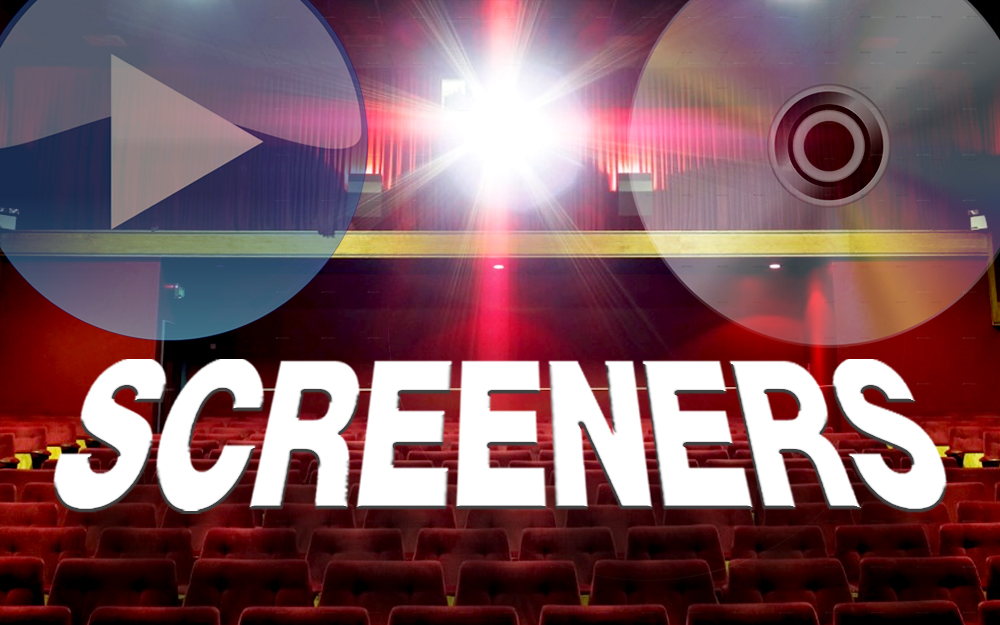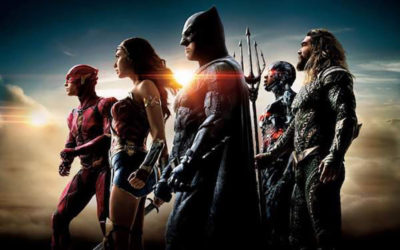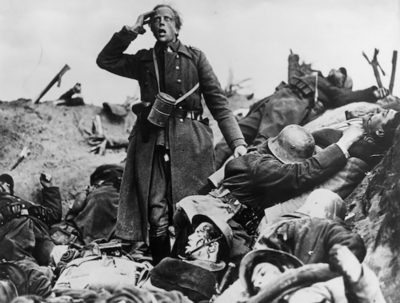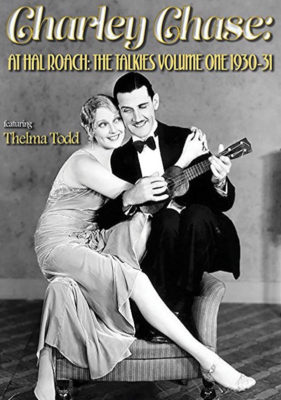
BY ROBIN E. SIMMONS
NOW SHOWING:
A WRINKLE IN TIME
 When author Madeleine L’Engle was asked if she saw the 2004 ABC TV broadcast version of her popular 1962 sci-fi fantasy novel, she said she’d “glimpsed it.” When asked if it met her expectations, she answered: “Oh yes, I expected it to be bad and it is.”
When author Madeleine L’Engle was asked if she saw the 2004 ABC TV broadcast version of her popular 1962 sci-fi fantasy novel, she said she’d “glimpsed it.” When asked if it met her expectations, she answered: “Oh yes, I expected it to be bad and it is.”
It’s not too hard to imagine if she might say something similar regarding the latest cinematic iteration of WIT.
It’s probably not accurate to call L’Engle’s literary creation “beloved.” (See the book review in this issue of CVW). It’s certainly not as universally cherished at C.S. Lewis’ “Narnia Chronicles” or J.R.R. Tolkien’s “Hobbit” tales.
Ava DuVernay’s lavish new adaptation of L’Engle’s now iconic children’s novel does not enthrall nor does it fully engage the emotions.
What is does well is bathe the audience in wave after wave of wonderful, fantastical visuals as the story almost randomly leaps among unidentified worlds. Flying dragons are always fun and the eye-popping alien landscapes are mesmerizing.
I got more than a little disoriented during middle-schooler Meg Murry’s (Storm Reid) quest to find her missing scientist father (Chris Pine) while dealing with feelings of low self-worth and confidence. The editing seemed choppy and further obfuscated a cohesive sense of place. Or even a consistent visual style. Oh, by the way, Meg’s mom is black and her dad is white. Not sure why that was a factor or how it actually impacted Meg – or the audience. Are we supposed to think that’s why she felt badly about herself?
Meg is accompanied by Charles Wallace (Deric McCabe) her adopted younger brother.
Three celestial beings Mrs. Which (Oprah Winfrey), Mrs. Whatsit (Reese Witherspoon) and Mrs. Who (Mindy Kaling) assist in the quest.
I have a lot of questions about the three “Mrs.” Do they have husbands or families? I also got tired of the too obvious bromides like “believe in yourself and have faith in who you are” and so on and on. I never had a doubt about young Meg finding her true self.
The basic idea that there are wrinkles in the fabric of time and space known as “tesseracts” and by “tessering” they can be used to travel to fabulous places and unimaginable dimensions. Of course, there’s a seemingly all-powerful evil to confront and lessons to be learned about the importance of family and the primacy of LOVE as a healing force in our individual lives and maybe the universe itself.
NEW FOR THE HOME THEATER:
JUSTICE LEAGUE
 For months, the big anticipation for the home video release of “Justice League” was that it potentially include deleted Zack Snyder’s original cut of the movie. The persistent rumor was the movie was partially directed or “taken over” or “saved” by Joss Whedon. The brief moments, images and scenes that were included in the trailer but NOT in the theatrical release remain puzzling. Petitions were signed and demonstrations were held on the street in front of WB’s Burbank studio. Although there are ample, but standard making of and behind the scene extras, only a few seconds (literally) of the much-wanted material from the first Snyder cut is included. Why would WB widely advertise, including a sticker on the Blu-ray box, the home video “includes BONUS SCENES (all caps) not seen in theaters!”? Shameful.
For months, the big anticipation for the home video release of “Justice League” was that it potentially include deleted Zack Snyder’s original cut of the movie. The persistent rumor was the movie was partially directed or “taken over” or “saved” by Joss Whedon. The brief moments, images and scenes that were included in the trailer but NOT in the theatrical release remain puzzling. Petitions were signed and demonstrations were held on the street in front of WB’s Burbank studio. Although there are ample, but standard making of and behind the scene extras, only a few seconds (literally) of the much-wanted material from the first Snyder cut is included. Why would WB widely advertise, including a sticker on the Blu-ray box, the home video “includes BONUS SCENES (all caps) not seen in theaters!”? Shameful.
Bruce Wayne, fueled by his restored faith in humanity and inspired by Superman’s selfless act, enlists the help of his newfound ally, Diana Prince, to face an even greater enemy.
Together, Batman and Wonder Woman work without delay to find and recruit a team of metahumans against to stand the newly awakened threat. However, despite the formation of this unprecedented league of Super Heroes – Batman, Wonder Woman, Aquaman, Cyborg and The Flash – it may be already too late to save the planet from an assault on a truly apocalyptic scale.
Justice League stars Amy Adams as Lois Lane, Jeremy Irons as Alfred, Diane Lane as Martha Kent, Connie Nelson as Hippolyta and J.K. Simmons (no relation) as commissioner Gordon. The screenplay is by Chris Terrio and Joss Whedon from a story by Terrio and Zack Snyder. Warner Bros. Pictures and DC Entertainment. 4K Ultra HD Blu-ray Combo Pack, Blu-ray 3D and DVD.
KAMERADSCHAFT (1932)
 Director G.W. Pabst’s compelling film is based on the 1906 Courrieres mining catastrophe that killed over 1,000 miners in the Pas-de-Calais region of northern France along the German-French border. The underground explosion trapped several hundred French miners were freed by their German colleagues who violated the border and their supervisors to rescue their trapped French counterparts.
Director G.W. Pabst’s compelling film is based on the 1906 Courrieres mining catastrophe that killed over 1,000 miners in the Pas-de-Calais region of northern France along the German-French border. The underground explosion trapped several hundred French miners were freed by their German colleagues who violated the border and their supervisors to rescue their trapped French counterparts.
In an effort to save the entombed Frenchmen, German miners Wittkopp (Ernest Busch) and Kasper (Alexander Granach) take it upon themselves to cross a disintegrating war tunnel leading down into the mines. Though the workers hold no political biases against one another, their heartless bosses tried to stop the cross-cultural rescue mission.
This beautifully crafted, timeless and dramatic film is plea against war and for international cooperation — if not friendship — between peoples.
Pabst creates an unsettling and visceral sense of claustrophobia to this ticking-clock struggle for survival. The sets (yes, sets) are as striking as the sound design. This film solidified Pabst’s international reputation as one of the more morally engaged artists of his time.
Generous extras make this 2K restoration a treasured title for any film buff’s home digital library. I was fascinated by the new interview with film scholar Hermann Barth on the film’s remarkable production. Criterion. Blu-ray.
Recommended.
CHARLIE CHASE: THE TALKIES VOLUME ONE (1930-31)
 This 2-DVD collection of 18 “two-reeler ” (20 min) shorts of over-looked film comedian Chase has never before been assembled into a comprehensive collection. SPECIAL FEATURES include detailed and fascinating commentaries on each short by Hal Roach authority, Richard M. Roberts. There’s a bonus comedy: “La Señorita de Chicago” (Spanish version of “The Pip from Pittsburg”), a poster and still gallery. THE SHORTS: “The Real McCoy,” “Whispering Whoopee,” “All Teed Up,” “Fifty Million Husbands,” “Fast Work,” “Girl Shock,” “Dollar Dizzy,” “Looser Than Loose,” High C’s 1931 Thundering Tenors, The Pip from Pittsburg,” “Rough Seas,” “One of the Smiths,” “The Panic Is On,” “Skip the Maloo!,” “What a Bozo!,” “The Hasty Marriage.”
This 2-DVD collection of 18 “two-reeler ” (20 min) shorts of over-looked film comedian Chase has never before been assembled into a comprehensive collection. SPECIAL FEATURES include detailed and fascinating commentaries on each short by Hal Roach authority, Richard M. Roberts. There’s a bonus comedy: “La Señorita de Chicago” (Spanish version of “The Pip from Pittsburg”), a poster and still gallery. THE SHORTS: “The Real McCoy,” “Whispering Whoopee,” “All Teed Up,” “Fifty Million Husbands,” “Fast Work,” “Girl Shock,” “Dollar Dizzy,” “Looser Than Loose,” High C’s 1931 Thundering Tenors, The Pip from Pittsburg,” “Rough Seas,” “One of the Smiths,” “The Panic Is On,” “Skip the Maloo!,” “What a Bozo!,” “The Hasty Marriage.”
Growing up, I was drawn to vintage silent and early sound comedies. I was an early fan of Keaton and especially Laurel and Hardy. But I could never get a handle on Chase’s comic screen persona; he left me cold and confused. That is until I read Laurel and Hardy scholar Randy Skretvedt’s observations about Chase:
“…Even though Chase’s humor is usually described as ‘the comedy of embarrassment,’ it’s really the comedy of the totally improbable. Reality is not Chase’s cup of tea. His film plots are not about delivering a piano, or putting up a radio aerial, or cleaning the house before the wife comes home. Chase’s story lines … don’t always neatly resolve and have often left me thinking, ‘What was that all about?’ Now I’m realizing that Chase’s humor is rooted in the contrast between his normal-seeming personality and the totally bizarre predicaments he gets into. In “Fast Work” and “Girl Shock,” two of the strangest short comedies ever made. Charley is not really embarrassed at all. In fact, he’s not just the willing participant in some truly deviant behavior – he’s often the catalyst!” Yes indeed. Sprocket Vault. DVD
robin@coachellavalleywekly.com










































